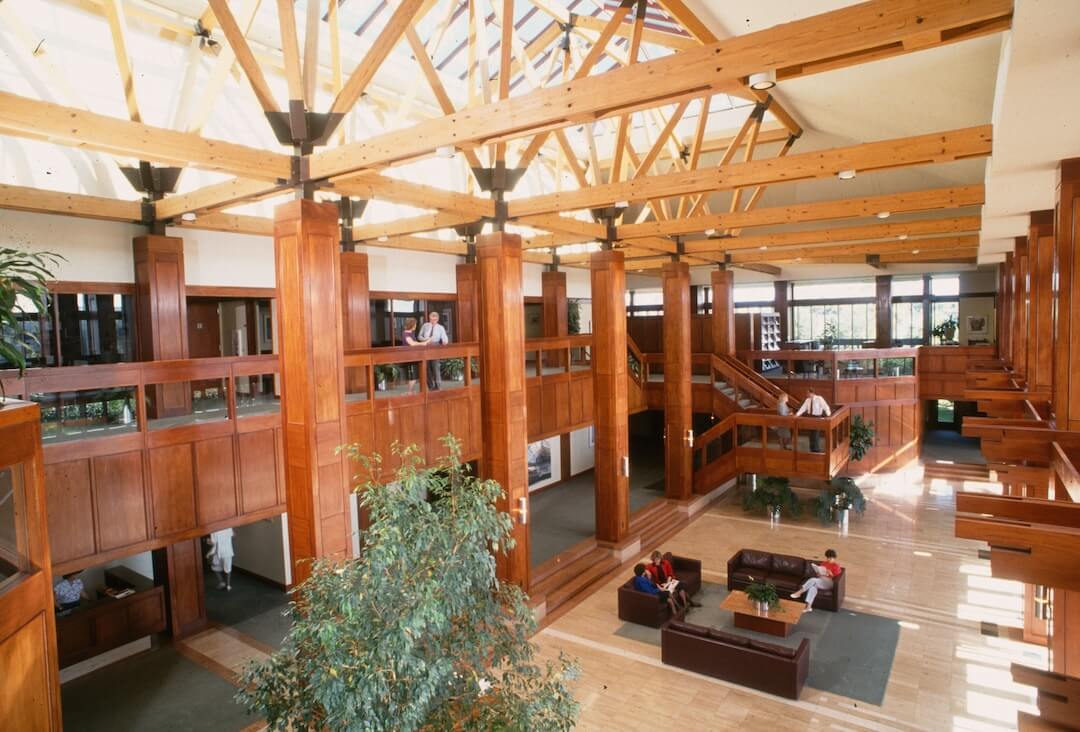The earthquake and tsunamis in South Asia and their aftermath represent a tipping point in so-called “citizen journalism.” What September 11, 2001, was to setting off the growth and enhanced reputation of blogs, the December 2004 tsunamis are to the larger notion of citizen journalism (of which blogs are a part).
If you think about it, this worst natural disaster in a lifetime is an amazing media story. (And that’s not to discount the horrible human tragedy of it, only to focus here on the media angle.) It’s not only that it will occupy traditional journalists for months and even years during the recovery. What’s amazing is how many of the people who experienced and survived the disaster — spread across several countries and thousands of miles — were able to share their heart-wrenching stories, photographs, and videos with the rest of the world.
Digital technologies — the Web, e-mail, blogs, digital cameras, camera phones — have evolved to the point where people on the scene share with professional journalists the ability to reach a wide audience, to tell and show the world what they saw and experienced. Where once disaster eyewitness photographs and videos turned up for widespread viewing only on news programs and in newspapers, today through e-mail, blogs, and a blogging infrastructure that spreads amateur news quickly and efficiently, they often find large audiences without the help or need of mainstream news outlets.
It doesn’t have to be that way. Mainstream news organizations can and should do more to embrace citizen journalism, especially in instances like this where professional reporters aren’t immediately on the scene during a widespread disaster, nor could traditional journalists ever hope to cover all there is of importance across a huge geographic space.
Digital still and/or video cameras and photo phones were ubiquitous among many of the tourists who were visiting the Asian beaches devastated by the tsunami.What’s so striking about this story is the breadth of citizen coverage. Digital still and/or video cameras and photo phones were ubiquitous among many of the tourists who were visiting the Asian beaches devastated by the tsunami — and to a lesser extent by local resident populations.
You’ve probably seen some of the survivors’ amateur videos of the tsunami striking land on TV news programs and websites of traditional news organizations. If you’ve spent time looking at blogs, you’ve seen many more — personal accounts, amateur photographs, and videos. Much of it is compelling and emotional.
Historians will benefit from a wealth of material on the tsunamis of December 2004 — not just the work of professional reporters and photojournalists, but mountains of digital text accounts, photos, and videos from eyewitnesses to the events, all shared on the Internet.
But let’s not just let the historians benefit. Mainstream news organizations should consider the tsunami story as the seminal marker for introducing citizen journalism into the hallowed space that is professional journalism.
Before and after
Dan Gillmor, former Silicon Valley technology columnist and author of “We the Media,” a book published last year that explores the growth and promise of citizen journalism, says that the 2004 tsunamis represent the point at which a major change takes place in the media world. “I’m pretty sure this is one of those before and after moments,” he says. “There will be before the tsunami and after the tsunami.”
After the tsunami, he thinks (and I hope) that the contributions of citizen reporters will at last be taken more seriously by editors of mainstream media. When a story of this magnitude strikes, perhaps next time we’ll see a mix of citizen and professional reporting. In the coming years, it will be routine for news consumers to find the best of citizen reporting mixed in with the work of professional journalists.
There are only a few examples of mainstream news organizations taking the tsunami citizen-journalism opportunity and running with it. BBC News Online, one of the pioneers among big media in soliciting citizen reporting, has done an outstanding job. The BBC site includes eyewitness tales from people in seven affected countries; readers’ stories of reuniting with lost loved ones and friends; photos from survivors; and survivor amateur video.
Recognizing that there’s some powerful material on blogs, The Guardian of the U.K. has aggregated some of the best tsunami writing from blogs around the world, and published a highlights page of some of the best work on its website. Not quite as strong but still useful was Time.com’s page of links to citizen reporting and survivor experiences. MSNBC.com scratched the surface with its “Citizen Journalists Report” page, a collection of reader comments including some brief accounts from survivors.
(That MSNBC.com page includes a video link to an interview with the ex-wife of an apparent tsunami casualty in Thailand, touted as a discussion with “Citizen Journalist June Shelley.” That’s an odd characterization; she might simply and more appropriately be called a “source.”)
Among most of the largest U.S. news websites, there’s scant indication of the citizen-journalism opportunity, alas. NYTimes.com includes nothing close to what BBC News Online offers, other than a public discussion forum. The same goes for WashingtonPost.com, LATimes.com, AJC.com (Atlanta Journal-Constitution), and others.
It’s too scattered
Gillmor says that what really should have been done by some mainstream news organization was to aggregate the best of the tsunami citizen reporting in one place. Point to or host survivor photos and videos. Link to blogs of survivor experiences, and excerpt the best and most powerful writing. Link to all the sites being used in trying to reunite loved ones with tsunami victims or locate their bodies.
“We’re still in the age when this type of news is, by definition, scattered and not aggregated” –Dan Gillmor“We’re still in the age when this type of news is, by definition, scattered and not aggregated,” he says. Any online news outlet willing to take on this task would be performing a great public service. (Even Google doesn’t perform such a service yet. Yahoo! News at least has a page of tsunami blogs, but it falls short of the potential.)
Such a project wouldn’t be all that complicated or time-consuming. Assign an editor and a designer to the project and it could probably be ready to go in a day or two. Gillmor suggests a “blog-plus” approach, with a newest-items-first model for new citizen-reporting and tsunami-blog discoveries, and special features and sidebars out to the sides for highlights meant to stick around for a few days.
While some bloggers have done such a tsunami-news aggregation, no one has yet caught it all. A news organization with the resources, brand credibility, and audience reach probably could do a more thorough job.
What’s holding mainstream editors back this time? Probably their long-held reticence to host any content that drives people off their websites to third-party offerings, and overall skepticism and fear about the wisdom of carrying citizen reporting. (My reaction: It’s time to get over it!)
The video conundrum
Why the focus on traditional news companies playing this role rather than the blogging community? Well, one of the most compelling things to come from citizen reporters who survived the tsunami was video of the disaster, which made its way onto some blogs (and eventually, also, to TV newscasts). Bloggers with tsunami video but without deep pockets to pay for high bandwidth costs found they couldn’t meet the demand. (At least one effort, by the Media Bloggers Association, is attempting to match up Web hosts willing to contribute bandwidth with bloggers wanting to host tsunami videos.) 
Another part of that public-service mission for news companies could be to offer to host or mirror citizen-journalist video on their websites, says Gillmor. This is a classic problem with compelling Web news video, he points out, and news organizations can help solve the problem — ensuring that Web users have access to important citizen-reported video news, and setting themselves up as the most reliable place online to find it.
Indeed, Gillmor suggests, for a story of this magnitude, “it wouldn’t be a bad idea for news organizations to collaborate” — perhaps joining together to host citizen-survivor video for the greater good. When the nations of the world are coming together to aid the tsunami victims, why can’t news companies put aside their competitive “differences” and cooperate?
We’re certainly going to see more citizen news video in the future. Much has changed even since 9/11. While citizen reporting on blogs was much in play during that tragedy, in the three years since, digital photo technology is in the hands of more people and there are many more bloggers ready to publish. With the recent tsunami, we saw a flood of citizen video — and more is likely out there but not yet made public. So let’s prepare for even more, says Gillmor.
‘That’s their job’
Another citizen-journalism entrepreneur, BackFence.com co-founder Mark Potts, who was one of the original team of The Washington Post‘s online services, wonders why more editors haven’t yet really seen the opportunity presented by tsunami citizen reporting.
If Web users want to read bloggers’ experiences or see their images, editors shouldn’t be satisfied with having them go to Google to find it. “Isn’t that editors’ role in the first place?” Potts says. “To pick the best content and make it available to people? That’s their job.”
Backfence is a hyperlocal citizen-journalism initiative, due to debut in March with sites in the Washington, D.C., region then expand elsewhere. While prepared to operate its news and information sites alone, with content provided by local citizens, the company currently is seeking out partnerships with mainstream news outlets serving the same markets. (It has none yet.) CEO Susan DeFife says the D.C.-area sites will serve municipalities with hyperlocal coverage — stuff that newspapers like The Washington Post won’t cover. Backfence’s competition is the community newspaper covering the same community it plans to target; metro papers are seen as potential partners.
Backfence is an example of “if newspapers don’t do it, someone else will.” If metro newspapers don’t incorporate technology-enabled local citizen journalism into their operations, then others will. If national and international mainstream news organizations don’t fit citizen reporting into their overall coverage packages, especially on major stories like the South Asian tsunamis, there are plenty of people and companies that will.
Walled garden or mixed planting?
I wonder what combined professional/citizen journalism of a few years hence will look like. Will citizen reporting be ghettoized, as seems to be the inclination of news companies today, with it walled off and treated as something different and “not real journalism”? Or will it integrate into the main news product, identified as being produced by non-professionals and with appropriate disclaimers (“We can’t confirm the authenticity or accuracy of this report”)?
You say what you can vouch for and what you cannot; it’s as simple as that.Gillmor thinks the latter approach is obviously the correct one. With a package on a topic like the tsunamis, you present citizen reporting where readers can find it — alongside the professional reporters’ coverage. You say what you can vouch for and what you cannot; it’s as simple as that. Tomorrow’s readers, as well as editors, will have to employ more of their own judgment to find the truth in the more complete information package presented to them, he says.
Editors skittish about that advice might consider that they’ve been presenting unauthenticated citizen content for many years in the form of “man on the street” interviews. “We don’t check ID’s when we do those,” Gillmor points out, and we thus risk the occasional comment from “Heywood Jablome.”
Editors need simply to apply the same editing standards and professional skepticism with citizen reporting that they’ve long done with content submitted from staff reporters, photographers, and freelancers. When a citizen report proves wrong or disingenuous, correct it or remove it, and be transparent about what you’ve done.
A new landscape
The South Asian tsunamis, like September 11, have altered the lives of millions of people. The planet will never be the same.
And as with September 11, the tsunamis changed the media landscape. They thrust into the limelight an army of accidental journalists. Perhaps as a result, now is the time when citizen reporters will begin to join the ranks of journalism’s working class in informing the public — not as professional equals, yet in some ways as important in the grand scheme of news.





